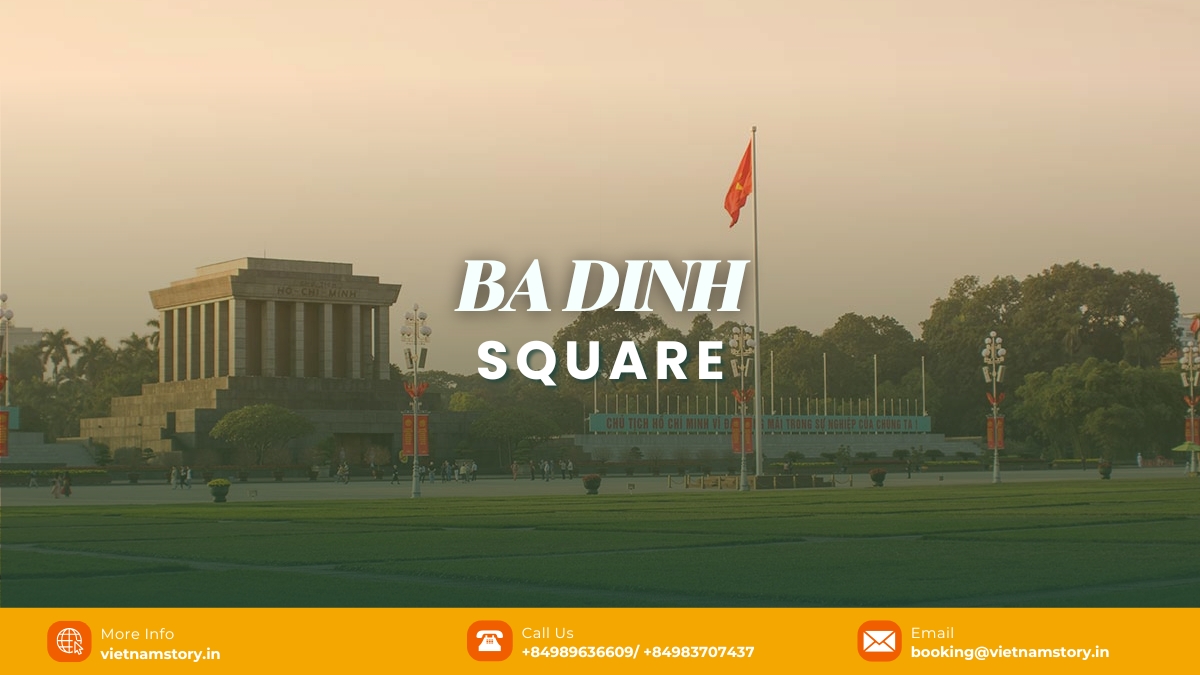Ba Dinh Square, a vast, open space in the heart of Hanoi, is more than just a geographical location. It’s a place of profound historical significance, a symbol of Vietnamese independence, and a central point for understanding the nation’s modern identity. For Indian tourists planning their Vietnam travel adventure, understanding Ba Dinh Square is key to grasping the country’s spirit. This article delves into the history, features, and significance of Ba Dinh Square, while also exploring the remarkable attractions that lie within easy reach, making it a must-visit destination for anyone exploring the Vietnamese capital.
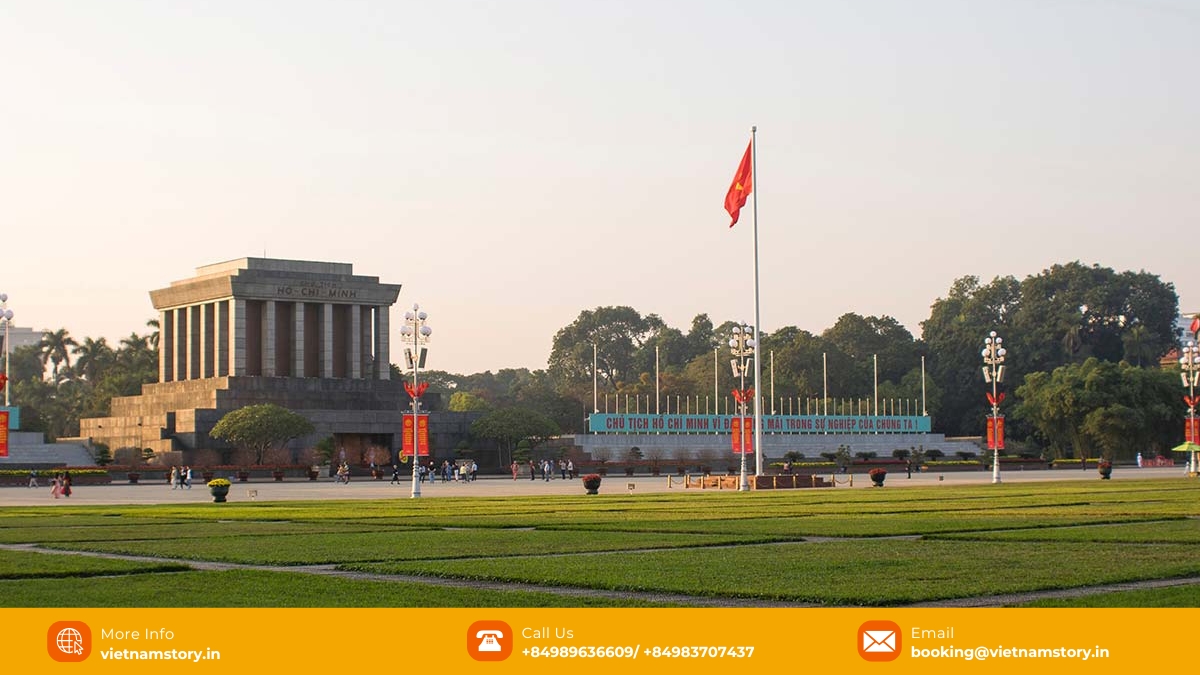
What is Ba Dinh Square? Location, Size, and Significance
Ba Dinh Square, strategically located in Hanoi’s Ba Dinh District, holds paramount historical significance. It was the precise spot where Ho Chi Minh proclaimed the Declaration of Independence on September 2, 1945, marking the birth of the Democratic Republic of Vietnam and signalling the end of French colonial rule.
This pivotal event, a core piece of Vietnam history, cemented the square’s status as a powerful symbol of national unity and the struggle for freedom and independence. Surrounded by key government buildings, including the Presidential Palace, the National Assembly Building, and the Ministry of Foreign Affairs, Ba Dinh Square lies at the heart of Hanoi’s political district. Its sheer size and grandeur reflect its importance as a national gathering place and a must-see location for visitors interested in modern Vietnamese history.
- Location: It sits prominently on Hung Vuong Street, right within the Ba Dinh District of Hanoi. It’s the central feature of the expansive Ho Chi Minh Mausoleum Complex.
- Size: This is Vietnam’s largest square. While dimensions vary slightly in records (some state 367m long and 85m wide, others 320m wide and 10m long, or 320m long and 100m wide), its scale is undeniable. It can hold up to 200,000 people, used for major national gatherings and parades.
- Layout: The square features a distinctive grid pattern of 210 (or 168) vibrant green grass squares connected by wide, 1.4m wide pathways, making it easy to walk through.
- Flagpole: A tall flagpole, standing 25m, 29m, or even 30m high, marks the center. This is where the daily flag ceremonies occur, a significant ritual.
- Surrounding Buildings: Important landmarks frame the square. You’ll find the revered Ho Chi Minh Mausoleum to the west, government offices like the Central Committee of the Communist Party and the Ministry of Foreign Affairs to the north and south respectively, and the striking National Assembly Building (formerly Ba Dinh Hall) to the east.
The Story of Ba Dinh Square: From Park to National Symbol
Ba Dinh Square isn’t just old; it’s steeped in pivotal moments of Vietnam history. The history of Ba Dinh Square is intrinsically linked to Vietnam’s journey to self-determination. Originally part of the French administrative district, it was known as “Le Parc Pugininer” or “Rond-Point Pugininer” during the colonial era.
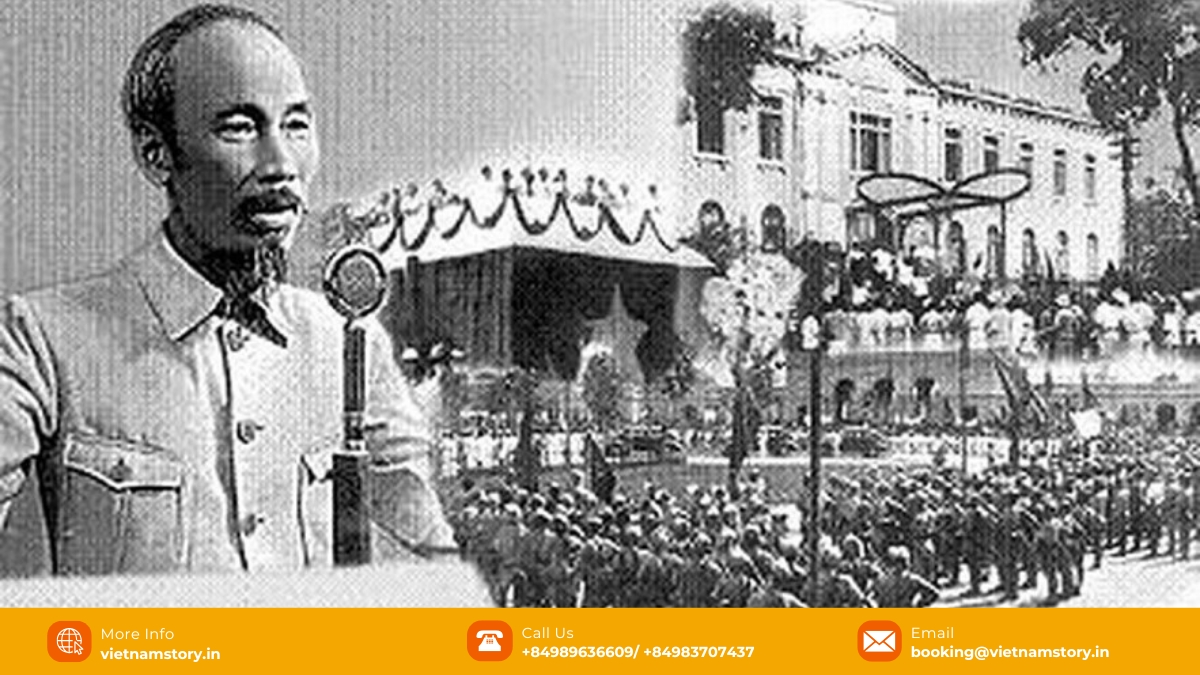
- Its past connects back to the ancient Thang Long Imperial Citadel.
- Under French colonial rule, it was re-established as a park called “Le Parc Pugininer” or “Round Point Pugininer”.
- The name changed to “Ba Dinh Square” in 1945, commemorating the Ba Dinh Uprising resistance.
- The Pivotal Moment: September 2, 1945, is the most crucial date. From a temporary wooden stage, President Ho Chi Minh read the Declaration of Independence, officially creating the Democratic Republic of Vietnam. This moment ended centuries of French colonial rule and feudalism, marking true national independence for Vietnam. The atmosphere was described as majestic and filled with hope.
- Since then, Ba Dinh Square has remained the primary venue for important national events, anniversaries, parades, and welcoming international leaders, serving as a powerful symbol of national identity and unity.
Witnessing History and Ceremony at Ba Dinh Square
Ba Dinh Square functions as a dynamic space where Vietnam history continues to unfold through important ceremonies and events. The daily flag raising and lowering ceremonies, performed with solemn precision by a military honor guard at dawn (around 6:00/6:30 AM) and dusk (around 9:00 PM), are powerful symbols of national pride and reverence for the flag.
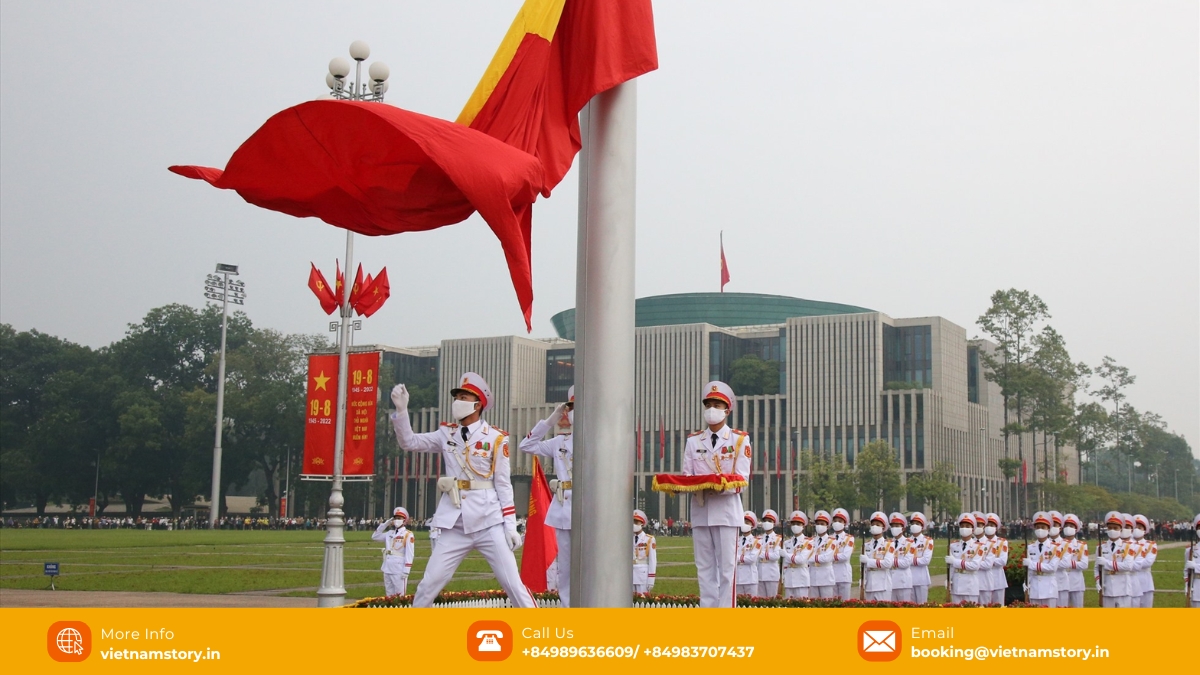
Vietnam’s National Day, September 2nd, sees major celebrations and parades held at the square, commemorating the Declaration of Independence. The square also serves as a venue for occasional political rallies, government-organized events, and public gatherings, reflecting its role as a vital national space. Most visitors combine their time at the square with a visit to the adjacent Ho Chi Minh Mausoleum, and the expansive area provides ample opportunities for photography (with restrictions around sensitive areas).
Visiting Ba Dinh Square: Practical Information for Tourists
Making the most of your visit to Ba Dinh Square and the surrounding complex is easy with a few practical tips, especially for Indian travelers navigating Hanoi.
- Accessibility: The square is easily accessible by taxi, motorbike, bus, or on foot from many parts of Hanoi. Getting to this significant site from your accommodation in Hanoi is straightforward:
- Taxi/Ride-hailing apps: The easiest and most convenient option. Taxis and apps like Grab are readily available in Hanoi and drivers will know the location.
- Motorbike: If you’re comfortable with Hanoi’s traffic, riding a motorbike is an option. Parking is available near the Ho Chi Minh Museum.
- Bus: Several public bus routes (e.g., 09, 16, 22, 34, 50) pass near Ba Dinh Square, stopping on nearby streets like Le Hong Phong. This is the most affordable way.
- Walking: Possible from the Old Quarter (approx. 2-3 km), but be prepared for a longer walk, especially in warm weather.
- Entrance fee: There is no entrance fee to enter Ba Dinh Square itself. However, there are fees for visiting nearby attractions like the Ho Chi Minh Mausoleum and Ho Chi Minh Museum.
- Opening hours: The square itself is generally open to the public from early morning (5:00/6:00 AM) to late evening (10:00 PM), but access may be restricted during certain events or ceremonies. The area immediately surrounding the Ho Chi Minh Mausoleum has specific morning-only opening hours, and it’s best to check these in advance. Note that the Mausoleum is closed Mondays and Fridays, and for annual maintenance usually in autumn.
- Dress code: While there’s no strict dress code for the open square, it’s highly recommended to dress modestly, especially if you plan to visit the Ho Chi Minh Mausoleum or other religious sites nearby. Shoulders and knees must be covered to show respect .
- Security: Expect a visible security presence around Ba Dinh Square, particularly near the government buildings and the Ho Chi Minh Mausoleum. Be prepared for potential bag checks or other security measures.
- Photography: Photography is generally allowed in the open square, but it is strictly prohibited inside the Ho Chi Minh Mausoleum. Be respectful and avoid taking photos of security personnel or in sensitive areas if it seems inappropriate.
- Best Time to Visit: Early morning is ideal to witness the flag raising ceremony and beat the heat and crowds. Late evening is also good for the flag lowering ceremony.
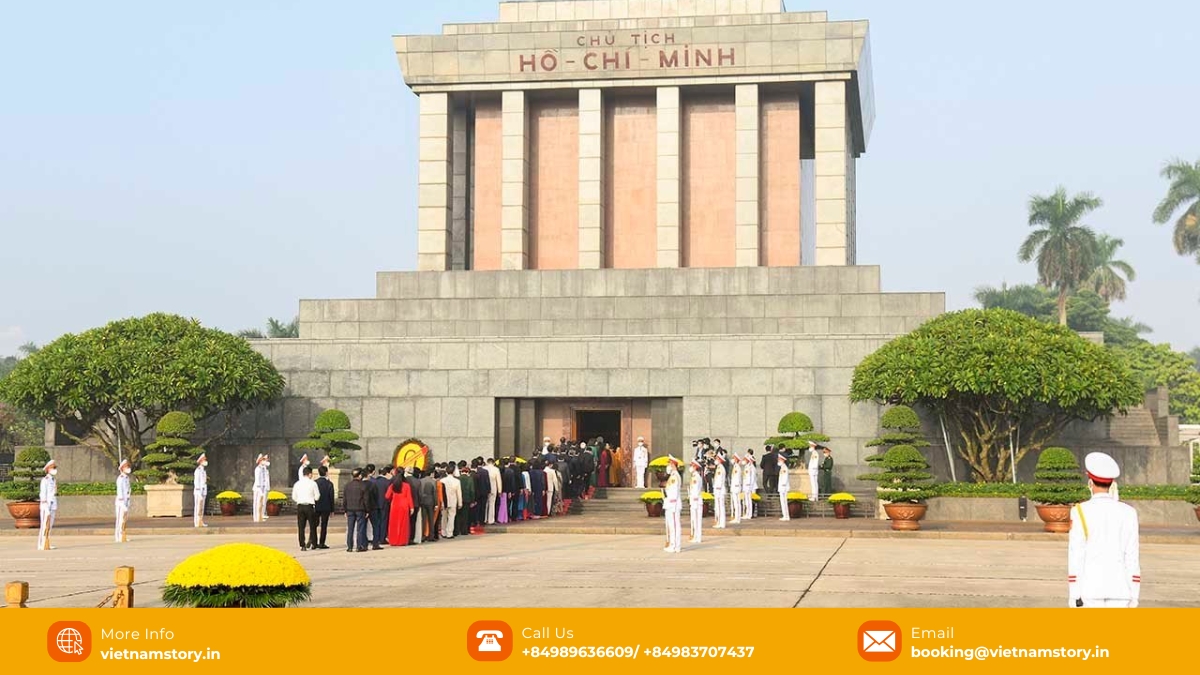
Visiting Ba Dinh Square offers more than just seeing a landmark.
- Simply Being There: Feel the weight of history standing on the very ground where independence was proclaimed.
- Exploring the Square: Walk the wide pathways between the green grass squares, appreciating the sheer scale and design of Vietnam’s largest public space.
- Witnessing the Flag Ceremonies: This is a highly recommended experience.
- Flag Raising Ceremony: Held daily at sunrise (around 6:00 AM in summer, 6:30 AM in winter). Witness the Honour Guard perform a precise, solemn ritual as the national flag is raised to the national anthem. It’s a powerful display of patriotism.
- Flag Lowering Ceremony: Takes place daily at 9:00 PM, equally solemn as the flag is carefully lowered and folded. These ceremonies are unique cultural experiences expressing deep national pride.
Top Places to Visit Near Ba Dinh Square
Ba Dinh Square’s central location makes it an excellent starting point for exploring some of Hanoi’s most significant historical and cultural sites, often combined within the Ho Chi Minh Mausoleum Complex.
- Ho Chi Minh Mausoleum: This imposing structure is the final resting place of Ho Chi Minh. Visitors can view his embalmed body – a very solemn and deeply significant experience for many Vietnamese. Strict dress code and rules apply.
- Ho Chi Minh Museum: Located near the mausoleum, this museum is dedicated to the life and legacy of Ho Chi Minh, showcasing exhibits on his personal life and role in Vietnam’s struggle for independence.
- One Pillar Pagoda (Chua Mot Cot): This unique and historic pagoda, dating back to the 11th century, stands on a single stone pillar resembling a lotus blossom. It’s an iconic symbol of Hanoi and a masterpiece of Vietnamese architecture.
- Presidential Palace: Built during the French colonial era, this grand yellow palace is now used for state functions. While not typically open for public entry, its impressive exterior is part of the complex view.
- Ho Chi Minh’s Stilt House: Within the Presidential Palace grounds, this simple stilt house is where Ho Chi Minh lived, reflecting his humble lifestyle. It offers a glimpse into his personal life.
- Temple of Literature (Van Mieu – Quoc Tu Giam): A short distance away, Vietnam’s first national university is a beautiful complex dedicated to Confucius and Vietnamese scholars.
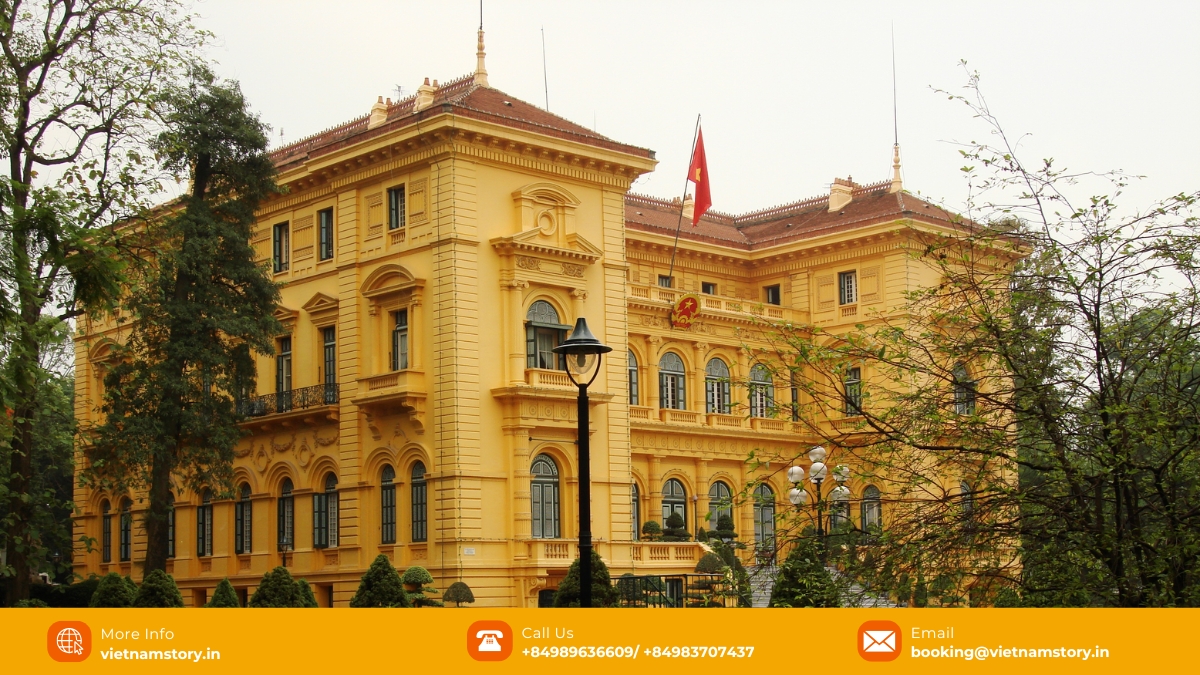
Why Ba Dinh Square is a Must-Visit on Your Hanoi Trip
For Indian travelers exploring Vietnam, Ba Dinh Square offers a profound connection to Vietnam’s soul. It’s not just a tourist spot; it’s a place of deep historical and national significance.
Standing here, you witness the culmination of a nation’s struggle for independence and see the vibrant expression of national pride in the daily ceremonies. It provides crucial context for understanding modern Vietnam and is the perfect starting point to explore other key Hanoi landmarks around the complex.
Conclusion
Don’t miss Ba Dinh Square on your Hanoi itinerary. It’s a powerful experience that adds depth to your understanding of Vietnam’s heritage and journey. Explore the square, witness the flag ceremony, and visit the surrounding sites like the Ho Chi Minh Mausoleum and One Pillar Pagoda.
Planning a trip to Vietnam from India? A specialized tour operator can help you weave these significant sites into a seamless and enriching itinerary. Let experts help you experience the heart of Hanoi and the rest of Vietnam. Explore options for your Vietnam holiday today!
See more:

